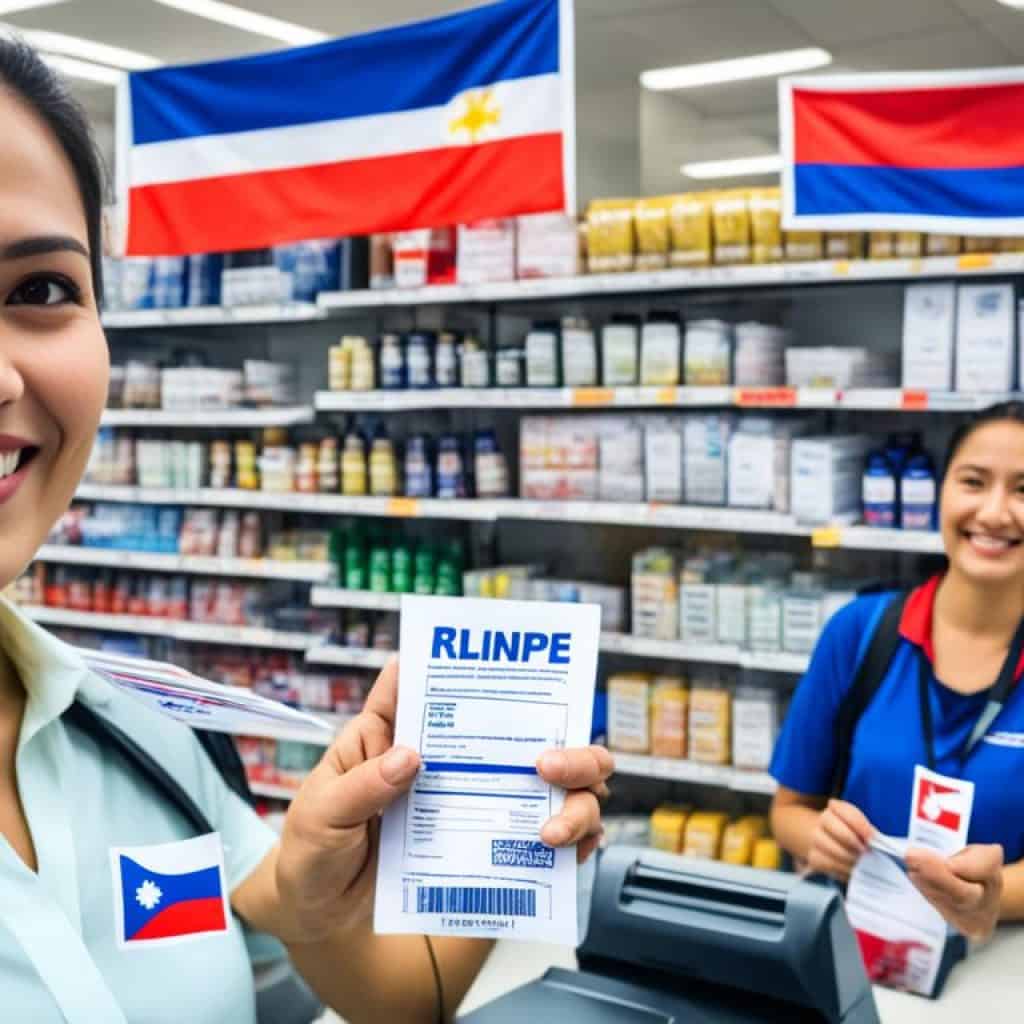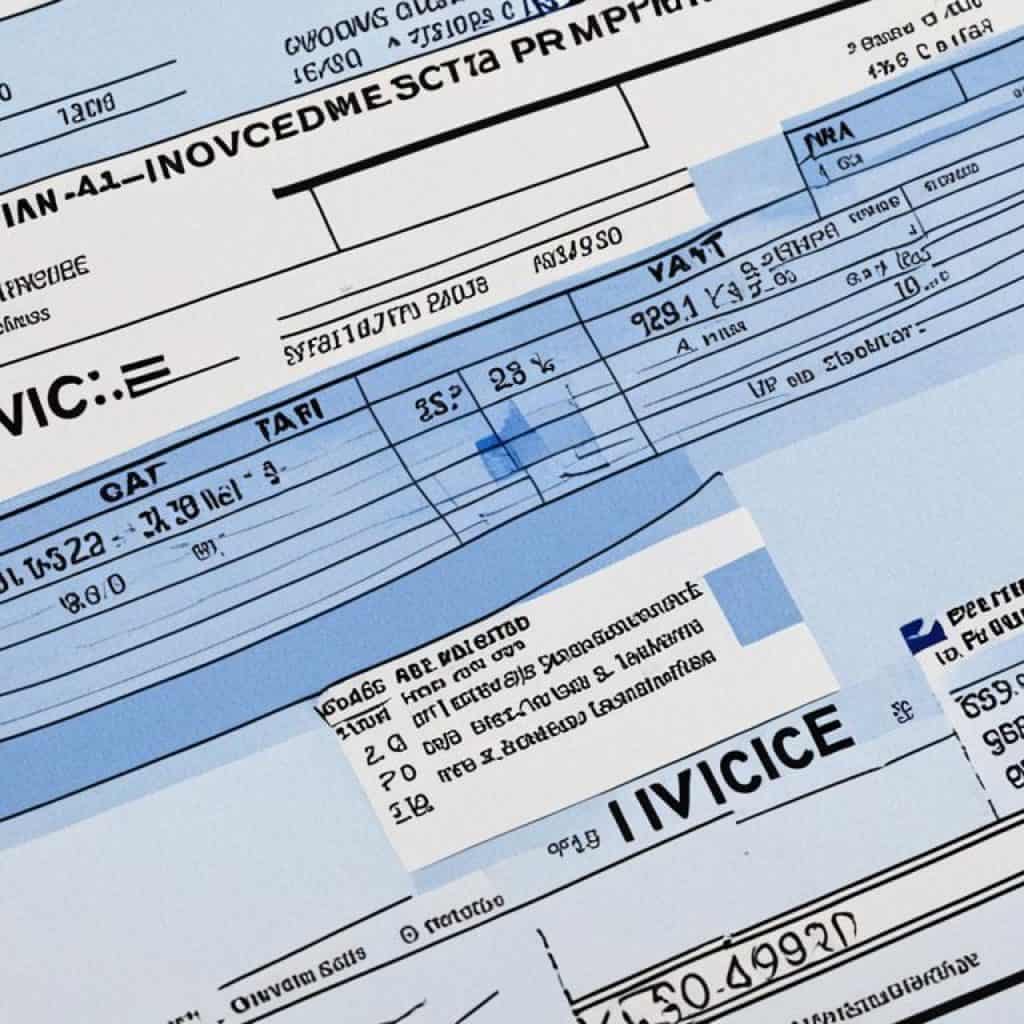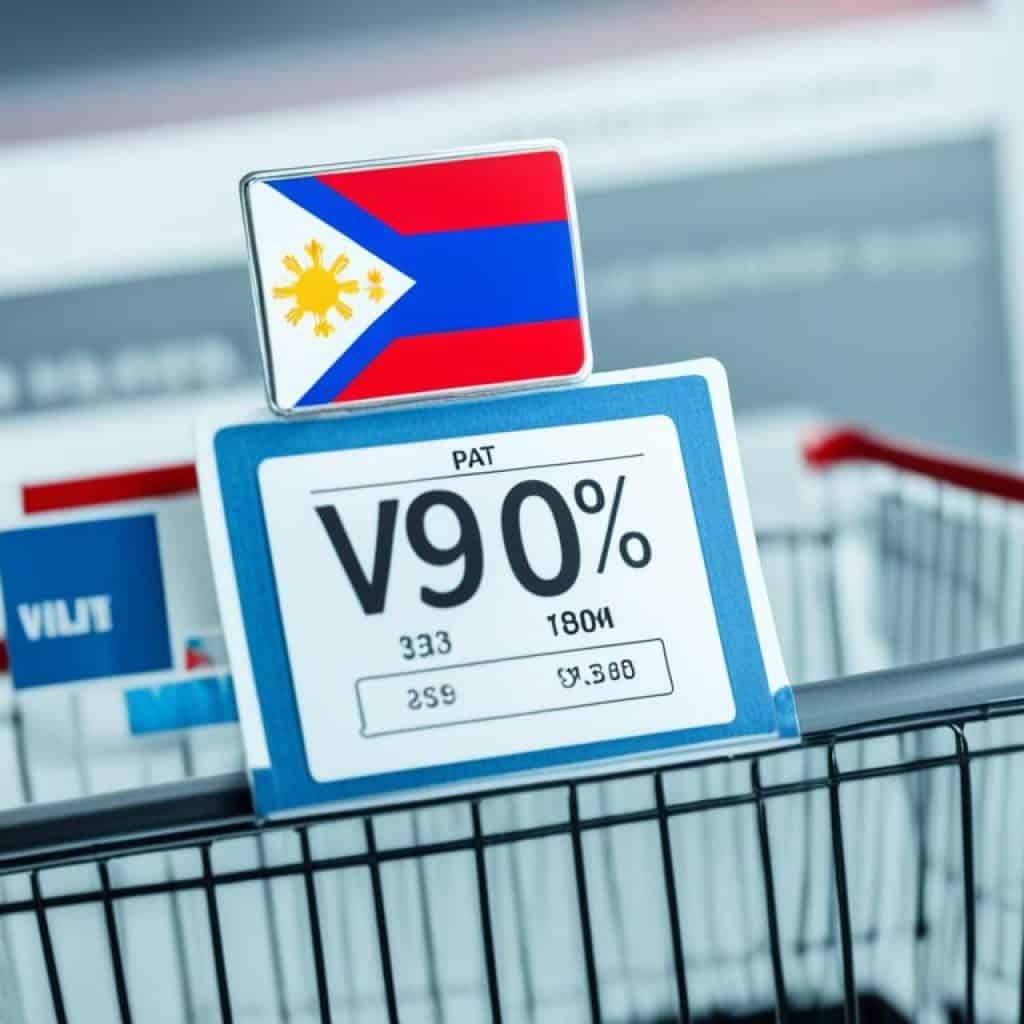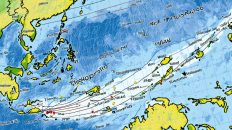Are you puzzled by the complexities of VAT regulations in the Philippines? Do you find yourself struggling to navigate the intricacies of VAT filing requirements, exemptions, and invoicing guidelines? You’re not alone. Understanding and complying with VAT in the Philippines can be a daunting task for businesses.
But fear not! In this comprehensive guide, we’ll unravel the mysteries of VAT in the Philippines, equipping you with the knowledge and tools necessary for compliant taxation. From the Philippine VAT rate to VAT refund procedures, we’ll cover it all. So, let’s dive in and conquer the world of VAT together!
Key Takeaways:
- Understand the Philippine VAT rate and its impact on your business.
- Discover VAT filing requirements and how to ensure timely compliance.
- Explore VAT exemptions and determine if your business qualifies.
- Master the art of VAT invoicing to meet regulatory standards.
- Learn about VAT refunds and the process for claiming them.
What is VAT?
Definition of VAT, Value-added tax in the Philippines, VAT on goods and services, Indirect tax in the Philippines
Value-added tax (VAT) is a consumption tax imposed on the exchange, lease, or sale of goods, services, and properties in the Philippines. It is considered an indirect tax as the burden of the tax is passed on to the buyer, even though the seller is responsible for filing and remitting VAT payments to the Bureau of Internal Revenue (BIR).
VAT is also imposed on the importation of goods into the country. It is an essential source of revenue for the government, contributing to public services and infrastructure development. All businesses involved in the supply chain, from manufacturers to retailers, are required to comply with VAT regulations and fulfill their tax obligations.
“VAT is a fair and efficient method of taxation that ensures shared responsibility among businesses and consumers.”
VAT is designed to be a broad-based tax, ensuring that most goods and services are subject to its application. This leads to a more equitable distribution of the tax burden across the population. By taxing goods and services at each stage of the production and distribution process, VAT captures value at various points, ultimately reducing the possibility of tax evasion and promoting transparency in business transactions.
Implementing VAT involves complex processes such as VAT registration, timely filing of VAT returns, accurate VAT invoicing, and effective record-keeping. Businesses must understand their VAT obligations and adhere to the guidelines provided by the BIR to avoid penalties and maintain compliance.
Benefits of VAT
VAT provides several benefits to the economy and society, including:
- Stable source of revenue for the government to fund public services and infrastructure development
- Reduction of tax evasion and illicit transactions through comprehensive tracking of sales and purchases
- Encouragement of formal business transactions and the growth of the formal economy
- Promotion of transparency and accountability in the business sector
- Sharing of the tax burden among businesses and consumers, ensuring a fairer tax system
Challenges of VAT
While VAT offers many benefits, it also presents challenges for businesses, such as:
- Administrative complexities related to VAT registration, filing, and compliance
- Increased costs due to the collection and remittance of VAT
- Potential impact on consumer behavior and purchasing power
- The need for proper record-keeping and accounting practices
| Pros | Cons |
|---|---|
| Stable government revenue | Administrative complexities |
| Reduction of tax evasion | Increased costs for businesses |
| Formalization of the economy | Potential impact on consumer behavior |
| Transparency and accountability | Need for proper record-keeping |
Despite these challenges, VAT remains an integral part of the Philippine tax system, supporting economic growth and equitable taxation.
VAT Tax Rates in the Philippines
The standard VAT rate in the Philippines is 12%. This rate is applied to the taxable gross selling price of properties and goods, as well as the gross value of service receipts and property leases.
However, certain sales can be classified as zero-rated or 0% VAT sales. In these cases, the seller is not required to apply the standard 12% VAT rate. Examples of 0% VAT-rated transactions include export sales, sales to persons conducting business outside the Philippines, and services sold outside the country.
This distinction allows businesses to facilitate international trade and support the growth of various industries. By offering zero-rated VAT sales for specific transactions, the government promotes competitiveness and encourages economic activities that contribute to the country’s development.
It is essential for businesses to accurately determine the VAT rate applicable to their transactions to ensure compliance and avoid penalties. Understanding the specific criteria for zero-rated sales and the corresponding documentation requirements is crucial for proper VAT management.
Let’s take a closer look at the different types of VAT rates and their implications:
VAT Registration in the Philippines
Businesses operating in the Philippines have a legal obligation to register for VAT if their actual gross sales or receipts amount to 3,000,000 PHP or more. However, even if sales or receipts do not reach the threshold, voluntary registration is possible.
Registering for VAT involves completing the required BIR (Bureau of Internal Revenue) forms and submitting them to the local Revenue District Office. These forms provide essential information about the business, such as its name, address, tax identification number (TIN), and nature of business.
Once the registration process is complete, businesses will receive a Certificate of Registration from the BIR. This certificate serves as proof of VAT registration and contains valuable information, including the business’s VAT identification number (VAT ID).
It is important to note that VAT registration confers certain benefits and obligations. Registered businesses can issue official VAT invoices and claim input VAT credits on their purchases. On the other hand, registered businesses are also required to charge VAT on their sales and remit it to the BIR.
Registering for VAT not only ensures compliance with tax regulations but also enables businesses to benefit from the VAT system. It is recommended to consult with tax professionals or seek assistance from accounting firms experienced in Philippine tax laws to ensure accurate and timely VAT registration.
“VAT registration allows businesses in the Philippines to unlock the benefits of the VAT system and effectively manage their tax responsibilities.”
VAT Exemptions in the Philippines
Businesses in the Philippines with actual gross sales or receipts of less than 3,000,000 PHP can benefit from VAT exemptions. These exemptions alleviate the burden of submitting and filing VAT for small businesses, allowing them to focus on growth and development. In addition to the sales threshold, specific business activities are also typically exempt from VAT, contributing to a favorable business environment.
Exempt Transactions
Certain transactions in the Philippines are considered VAT-exempt, providing relief to businesses engaged in these activities. Some common examples of VAT-exempt transactions include:
- Sale of Agricultural Products: Sales of agricultural products, such as fresh fruits, vegetables, and livestock, are typically exempt from VAT. This exemption supports the agricultural sector and incentivizes local farmers.
- Tuition Fees: Educational services, including tuition fees for primary, secondary, and tertiary education, are usually VAT-exempt. This exemption ensures accessible education for students and promotes equitable opportunities.
- Lending Operations: Interest income from loans granted by banks, pawnshops, and other lending institutions is typically exempt from VAT. This exemption encourages lending institutions to support economic growth through access to financial services.
- Transportation: Public transportation services, such as jeepneys, buses, and trains, are generally VAT-exempt. This exemption helps make transportation more affordable for the general public and supports mobility within the country.
It’s important to note that the gross annual sales and/or receipts for exempt transactions cannot exceed 3,000,000 PHP. This ensures that businesses that primarily engage in exempt activities remain within the VAT exemption threshold, fostering a fair and balanced tax system.
Take advantage of the VAT exemptions in the Philippines to optimize your business operations. By understanding the eligibility criteria and requirements, you can build a strong foundation for growth while minimizing the administrative burden associated with VAT compliance.
| Transaction Type | Description |
|---|---|
| Sale of Agricultural Products | Sales of fresh fruits, vegetables, and livestock |
| Tuition Fees | Primary, secondary, and tertiary education expenses |
| Lending Operations | Interest income from loans granted by lending institutions |
| Transportation | Public transportation services, including jeepneys, buses, and trains |

VAT Filing Requirements in the Philippines
In order to comply with the VAT regulations in the Philippines, businesses are required to fulfill specific filing requirements. Understanding these requirements is essential to ensure timely and accurate submission of VAT returns. Failure to comply with the filing requirements can lead to administrative penalties.
Monthly VAT Filing
Monthly VAT returns are filed using BIR Form 2550 M. This form is used to report and remit the VAT collected on sales made during the month. The deadline for filing monthly VAT returns is no later than the 20th day of the following month.
When filing the monthly VAT return, it is important to accurately calculate the VAT collected and calculate any input VAT that can be claimed. Businesses should keep records of all sales, purchases, and expenses to support the amounts reported in the VAT return.
Quarterly VAT Filing
Quarterly VAT returns are filed using BIR Form 2550Q. This form is used to report and remit the VAT collected on sales made during the quarter. The deadline for filing quarterly VAT returns is no later than the 25th day of the month after the end of the quarter.
Similar to the monthly VAT filing, businesses need to ensure accurate calculation of the VAT collected and the input VAT that can be claimed. It is important to maintain proper documentation and records to support the amounts reported in the VAT return.
Penalties for Non-compliance
Failure to file VAT returns on time or late filing can result in administrative penalties. The penalties vary depending on the duration of delay and the amount of VAT owed. It is crucial for businesses to prioritize the timely submission of VAT returns to avoid unnecessary penalties.
Summary of VAT Filing Requirements
Here is a summary of the VAT filing requirements in the Philippines:
| VAT Filing | Form | Deadline |
|---|---|---|
| Monthly VAT Filing | BIR Form 2550 M | No later than the 20th day of the following month |
| Quarterly VAT Filing | BIR Form 2550Q | No later than the 25th day of the month after the end of the quarter |
Complying with VAT filing requirements is crucial for businesses operating in the Philippines. It ensures that businesses meet their tax obligations and contribute to the proper functioning of the country’s tax system. To ensure accurate and timely filing, businesses should keep proper records, seek professional assistance when needed, and stay updated with any changes in VAT regulations.
VAT Refunds in the Philippines
Seeking a VAT refund in the Philippines can be a complex process, but understanding the requirements and following the correct procedures can help streamline the experience. Proper documentation, including official receipts or invoices, is essential for substantiating sales and purchases and facilitating the refund process.
The VAT refund time frame in the Philippines has been reduced to 90 days from the date of submission of all required documents. This ensures a faster turnaround and allows businesses to recover their VAT expenses more efficiently. However, it is important to note that the establishment and implementation of an enhanced VAT refund system is necessary for certain export sales to remain zero-rated.
When applying for a VAT refund, it is crucial to comply with the following requirements:
- Valid Official Receipts or Invoices: Make sure to keep proper documentation of all sales and purchases. Official receipts or invoices serve as evidence and substantiation for your refund claim.
- Compliance with BIR Regulations: Familiarize yourself with the Bureau of Internal Revenue (BIR) regulations regarding VAT refunds. Adhering to these guidelines will maximize your chances of a successful refund claim.
- Accurate Refund Calculation: Double-check your refund calculation to ensure accuracy. Any discrepancies or errors may delay the processing of your refund.
By closely adhering to these requirements and submitting all necessary documents, you can expedite the VAT refund process and improve the chances of a favorable outcome.
VAT Invoices in the Philippines
When it comes to VAT compliance in the Philippines, issuing proper VAT invoices is crucial. VAT invoices serve as essential documents to substantiate transactions and ensure adherence to tax regulations. To meet the requirements set by the tax authority, VAT invoices must include specific information:
- Seller’s VAT Number: The VAT invoice should prominently display the seller’s VAT registration number. This number serves as a unique identifier and helps verify the legitimacy of the transaction.
- Total Amount Paid Inclusive of VAT: The invoice should clearly indicate the total amount paid by the customer, including the VAT. This information facilitates accurate record-keeping and enables efficient VAT reporting.
- Identification of VAT-Exempt or Zero-Rated Sales: For VAT-exempt or zero-rated transactions, the invoice should explicitly state the applicable classification. This distinction helps differentiate between taxable and non-taxable sales.
To ensure compliance with VAT invoicing requirements, businesses should follow the guidelines preapproved by the tax authority. Implementing a standardized VAT invoice format throughout the organization helps streamline operations and minimize errors.
Here is an example of a VAT invoice format:
| Invoice Details | Customer Information | Payment Information |
|---|---|---|
| Invoice Number: 123456789 | Customer Name: John Smith | Total Amount Paid: PHP 1,000.00 |
| Date: January 1, 2023 | Customer VAT Number: PH123456789 | VAT Amount: PHP 120.00 |
| VAT Registration Number: PH987654321 | Customer Address: 123 Main Street | Invoice Total: PHP 1,120.00 |
Creating accurate and compliant VAT invoices helps businesses demonstrate transparency, adhere to tax regulations, and build trust with customers. It is essential to consult a professional tax advisor or refer to the tax authority’s guidelines to stay up-to-date with any changes in VAT invoicing requirements.

VAT for Digital Products in the Philippines
As the digital landscape continues to expand, the Philippines has implemented tax laws to regulate the sale of digital products. It is essential for businesses, especially overseas companies, to understand the implications of Value Added Tax (VAT) on such transactions.
Digital products encompass a wide range of offerings, including e-books, movies, software, and online ads. These products are subject to VAT in the Philippines, just like physical goods and services. If an overseas company sells digital products to customers within the country, they are required to charge the applicable VAT rate.
| Digital Product | VAT Rate |
|---|---|
| E-books | 12% |
| Movies | 12% |
| Software | 12% |
| Online Ads | 12% |
It is important to note that the VAT registration threshold of PHP 3,000,000 applies to digital product sales as well. If the actual gross sales or receipts from digital product sales exceed this threshold, businesses are required to register for VAT. However, if the sales do not meet the threshold, voluntary registration is still possible.
Different rules govern VAT for business-to-business (B2B) and business-to-consumer (B2C) sales of digital products. B2B transactions are subject to a reverse-charge mechanism, where the buyer is responsible for the VAT payment. On the other hand, B2C sales involve charging the VAT directly to the consumer.
Ensuring compliance with digital tax laws in the Philippines is crucial for businesses operating in the digital space. By understanding the VAT obligations and accurately charging the appropriate VAT rate, businesses can avoid potential penalties and contribute to the country’s tax revenue.
Image:
Registering for VAT as an Overseas Company
Overseas companies that sell digital products in the Philippines are required to register for VAT if their sales exceed the PHP 3,000,000 threshold. VAT registration is a necessary step to ensure compliance with the tax regulations in the country. However, non-resident companies cannot register for VAT directly. Instead, they are subject to withholding VAT by the Philippine payee.
When an overseas company sells digital products or services to customers in the Philippines, the Philippine payee deducts the applicable VAT amount from the payment. The VAT paid by the non-resident company can then be claimed as input tax by the Philippine payee when filing their own VAT returns.
It is important for overseas companies to understand the VAT registration requirements and processes in the Philippines to avoid any penalties or legal issues. By registering for VAT and complying with the tax regulations, overseas companies can establish a strong presence in the Philippine market and build trust with their customers.
| VAT Registration Requirements for Overseas Companies | Documents Needed |
|---|---|
| Valid proof of business registration | Business registration documents |
| Proof of non-residency | Non-resident certificate, proof of tax registration in home country |
| Bank statement | Evidence of financial transactions |
| Authorized signatory | Confirmation of authorized signatory |
By submitting these required documents to the Bureau of Internal Revenue (BIR) in the Philippines, overseas companies can successfully register for VAT and ensure compliance with the tax regulations of the country. Consulting with a professional tax advisor who specializes in international taxation can provide further guidance and assistance throughout the registration process.
VAT Compliance for Digital Products in the Philippines
Compliance with VAT regulations is crucial for businesses selling digital products in the Philippines. To ensure VAT compliance, it is essential to understand the digital tax regulations in the country and meet the requirements imposed by the tax authorities.
Charging and Collecting VAT on Sales
When selling digital products in the Philippines, it is necessary to charge and collect the appropriate VAT amount from customers. The standard VAT rate of 12% applies to most digital product sales. However, certain transactions may be classified as zero-rated or exempt from VAT.
It is recommended to use tax software that can accurately calculate the VAT amount based on the sales price and apply the correct rate. This helps in streamlining the VAT collection process and ensuring accurate compliance with VAT regulations.
Distinguishing Between B2B and B2C Transactions
When selling digital products, businesses need to distinguish between business-to-business (B2B) and business-to-consumer (B2C) transactions for VAT purposes. VAT requirements may vary depending on the type of transaction.
For B2B transactions, where the customer is a registered business entity, VAT may be shifted to the buyer through the reverse-charge mechanism. The buyer is responsible for accounting for the VAT on their VAT return.
On the other hand, for B2C transactions, VAT is directly charged to the customer, and the seller is responsible for collecting and remitting the VAT to the tax authorities. It is important to correctly identify the transaction type to ensure proper VAT compliance.
Issuing VAT Invoices
Issuing VAT invoices is a crucial part of VAT compliance for digital product sales in the Philippines. VAT invoices should include all the necessary information required by the tax authorities.
The VAT invoice should clearly state the seller’s VAT number, the total amount paid inclusive of VAT, and whether the sale is VAT-exempt or zero-rated. Including this information ensures transparency and compliance with VAT regulations.
| VAT Compliance Checklist for Digital Products | t|
|---|---|
| Charge and collect the appropriate VAT on sales | t|
| Distinguish between B2B and B2C transactions | t|
| Use tax software for accurate VAT calculation | t|
| Issue VAT invoices with the required information | t
Complying with VAT regulations for digital products in the Philippines is essential to avoid penalties and ensure proper tax compliance. By charging and collecting the correct VAT amount, distinguishing between B2B and B2C transactions, and issuing VAT invoices, businesses can meet the requirements for VAT compliance.

VAT Returns and Payments for Digital Products in the Philippines
Foreign businesses selling digital products in the Philippines must ensure compliance with VAT regulations to avoid penalties and maintain good standing with the tax authorities. As part of this compliance, filing VAT returns and making timely payments are essential.
When selling digital products in the Philippines, foreign businesses are required to file monthly VAT returns within 10 days after the end of each period. This involves accurately documenting sales and any applicable VAT charges during the reporting period.
To ensure timely submission of VAT returns, it is crucial to keep detailed records of digital sales, including customer information, transaction dates, and the corresponding VAT amounts. These records will help in accurately calculating the VAT liability and simplifying the filing process.
Upon filing the VAT return, foreign businesses must also pay any VAT owed within the specified deadline. Failure to meet VAT payment deadlines can result in penalties and potential legal consequences.
To ensure accurate VAT returns and timely payments, foreign businesses selling digital products in the Philippines are recommended to seek professional advice from experienced tax advisors. These experts can assist in understanding the complexities of VAT compliance and provide specific guidance on filing VAT returns and meeting payment deadlines.
Key Points:
- Foreign businesses selling digital products in the Philippines must file monthly VAT returns.
- VAT returns should be filed within 10 days after the end of each period.
- Accurate documentation of sales and VAT charges is essential for the filing process.
- VAT payments must be made within the specified deadline to avoid penalties.
- Consultation with a professional tax advisor is recommended for expert guidance on VAT compliance.
Indirect Tax Withholding for Overseas Companies
When it comes to doing business in the Philippines as an overseas company, understanding the tax obligations is crucial. One important aspect to consider is indirect tax withholding. In these cases, if you’re selling goods or services to another business in the Philippines and they provide a valid VAT number, the responsibility for tax payment shifts to the buyer through the reverse-charge mechanism.
Compliance is key in navigating the indirect tax withholding system. Proper invoicing and documentation are essential to ensure adherence to the requirements. By following the prescribed procedures, you can avoid any potential noncompliance issues and maintain a positive business relationship with your customers in the Philippines.
For a clearer understanding of indirect tax withholding and its implications, let’s take a look at the following example:
Suppose Company A, an overseas company, sells goods to Company B, a registered business in the Philippines. Company B provides its valid VAT number to Company A. In this case, Company B, as the buyer, is responsible for paying the VAT through the reverse-charge mechanism.
Indirect Tax Withholding Obligations
As an overseas company selling goods or services to businesses in the Philippines, it’s important to be aware of the following indirect tax withholding obligations:
- Verify the validity of the buyer’s VAT number. Ensure that the VAT number provided by the buyer is legitimate and actively registered with the Bureau of Internal Revenue (BIR).
- Implement the reverse-charge mechanism. When the buyer provides a valid VAT number, the responsibility for VAT payment shifts to the buyer. This means that the buyer will calculate and remit the appropriate VAT amount directly to the BIR.
- Maintain proper invoicing and documentation. Keep comprehensive records of the transactions, including invoices and relevant documentation, to support VAT compliance and provide evidence in case of any audits or inquiries.
By fulfilling these obligations, overseas companies can ensure compliance with indirect tax withholding requirements in the Philippines and avoid any potential penalties or legal implications.
Summary
Indirect tax withholding is an important aspect of doing business in the Philippines as an overseas company. By understanding the obligations and following the proper procedures, you can navigate the tax landscape with confidence. Remember to verify the validity of the buyer’s VAT number, utilize the reverse-charge mechanism, and maintain accurate invoicing and documentation. By doing so, you can ensure compliance and build strong business relationships in the Philippines.
| Tax Obligations | Description |
|---|---|
| Verify VAT Number | Overseas companies must confirm the validity of the buyer’s VAT number. |
| Reverse-Charge Mechanism | Responsibility for VAT payment shifts to the buyer when a valid VAT number is provided. |
| Maintain Documentation | Proper invoicing and documentation are crucial for VAT compliance. |
Advance Rulings and Other Indirect Taxes in the Philippines
The tax authority in the Philippines provides businesses with the opportunity to seek advance rulings on indirect tax matters. These rulings, whether formal or informal, offer clarity and guidance on complex tax issues, helping businesses make informed decisions and ensure compliance with tax regulations. Indirect tax advance rulings can be particularly useful in navigating the intricacies of VAT and other indirect taxes.
In addition to VAT, there are several other indirect taxes levied in the Philippines. These include percentage taxes, excise taxes, and customs duty. Understanding the nuances of these taxes is crucial for businesses operating in the country, as non-compliance can result in penalties and legal consequences.
When it comes to VAT, businesses can request tax rulings to obtain specific guidance on VAT-related matters. These rulings can address issues like the applicability of VAT on certain transactions or the eligibility for VAT exemptions. Consulting with tax experts or reaching out to the Tax Agency can provide businesses with the necessary information and support to navigate the complexities of VAT regulations.
Other indirect taxes, such as percentage taxes imposed on specific activities or products, excise taxes on certain goods like alcohol or tobacco, and customs duty on imported goods, require careful consideration and compliance. Each of these taxes has its own set of regulations and filing requirements, necessitating businesses to stay up-to-date with the latest tax laws.
Seeking expert advice from professional tax advisors can help businesses understand the intricacies of indirect tax regulations in the Philippines. These experts can provide accurate interpretations of tax laws, help optimize tax planning strategies, and ensure that businesses remain compliant with all applicable tax obligations.
Table:
| Indirect Taxes | Description |
|---|---|
| Value Added Tax (VAT) | A consumption tax imposed on the sale of goods and services in the Philippines. |
| Percentage Taxes | Taxes levied on specific activities, such as the sale of goods or services, based on a certain percentage of the gross sales or receipts. |
| Excise Taxes | Taxes imposed on certain goods, such as alcohol, tobacco, petroleum, and vehicles, either produced or imported in the Philippines. |
| Customs Duty | Taxes imposed on imported goods entering the Philippines, based on the value or quantity of the goods. |
Conclusion
Navigating the value-added tax (VAT) system in the Philippines can be challenging, but understanding the regulations is crucial. To comply with statutory requirements, businesses must familiarize themselves with the VAT rates, exemptions, filing requirements, and invoicing guidelines.
It is essential for businesses to prioritize VAT registration, efficient collection, and accurate reporting to ensure compliance. By partnering with experienced tax professionals, you can optimize your VAT compliance strategies and minimize the burden associated with VAT-related tasks.
Professional assistance from tax experts can provide valuable insights, ensuring your business effectively meets its VAT obligations. With their guidance, you can navigate VAT regulations confidently, remain compliant, and focus on growing your business without unnecessary complications.
FAQ
What is VAT?
VAT, which stands for Value-Added Tax, is a consumption tax imposed on the exchange, lease, or sale of goods, services, and properties in the Philippines. It is considered an indirect tax.
What are the VAT tax rates in the Philippines?
The standard VAT rate in the Philippines is 12%. It is applied to the taxable gross selling price of properties and goods, as well as the gross value of service receipts and property leases.
How can I register for VAT in the Philippines?
To register for VAT in the Philippines, you need to complete the necessary BIR forms and submit them to your local Revenue District Office. Once registered, you will receive a Certificate of Registration indicating your VAT status.
What transactions are exempt from VAT in the Philippines?
Certain transactions, such as the sale of agricultural products, tuition fees, lending operations, and transportation, are typically exempt from VAT in the Philippines. However, there are certain conditions and limitations that apply.
What are the filing requirements for VAT in the Philippines?
VAT returns in the Philippines must be filed monthly and quarterly. Monthly VAT returns are filed using BIR Form 2550 M, and the due date is no later than the 20th day of the following month. Quarterly VAT returns are filed using BIR Form 2550Q, with the due date no later than the 25th day of the month after the end of the quarter.
How can I apply for a VAT refund in the Philippines?
To apply for a VAT refund in the Philippines, you need to provide proper documentation, including official receipts or invoices, to substantiate your sales and purchases. The processing time for VAT refunds has been reduced to 90 days from the date of submission of the required documents.
What information should be included in VAT invoices in the Philippines?
VAT invoices in the Philippines should include key information such as the seller’s VAT number, total amount paid inclusive of VAT, and a clear indication of whether the sale is VAT-exempt or zero-rated. Invoices and official receipts must follow specific requirements preapproved by the tax authority.
Are digital products subject to VAT in the Philippines?
Yes, digital products, including e-books, movies, software, and online ads, are subject to VAT in the Philippines. Overseas companies selling digital products to customers in the country are required to charge the applicable VAT rate.
How can overseas companies register for VAT in the Philippines?
Overseas companies selling digital products in the Philippines are required to register for VAT if their sales exceed the PHP 3,000,000 threshold. However, non-resident companies cannot register for VAT but are subject to withholding VAT by the Philippine payee.
What are the compliance requirements for VAT on digital products in the Philippines?
Compliance with VAT regulations for digital products in the Philippines involves charging and collecting VAT on sales, distinguishing between business-to-business (B2B) and business-to-consumer (B2C) transactions, and issuing VAT invoices. The use of tax software can simplify the process of calculating and collecting VAT appropriately.
How often should VAT returns be filed for digital products in the Philippines?
Foreign businesses selling digital products in the Philippines are expected to file monthly VAT returns within 10 days after the end of each period. The returns must be filed and any VAT owed must be paid within the specified deadline.
Is there a withholding system for overseas companies in the Philippines?
Yes, a withholding system applies to supplies made by overseas companies in the Philippines. If the customer is a fellow business and provides a valid VAT number, the buyer handles the tax payment through the reverse-charge mechanism.
Can I apply for advance rulings on indirect tax matters in the Philippines?
Yes, the tax authority in the Philippines allows for the application of formal or informal advance rulings on indirect tax matters. In addition to VAT, there are other indirect taxes in the country, such as percentage taxes, excise taxes, and customs duty.
How can I navigate VAT compliance in the Philippines?
Navigating VAT in the Philippines requires understanding the regulations, rates, exemptions, filing requirements, and invoicing guidelines. It is important to comply with VAT registration, collection, and reporting obligations to ensure compliance with statutory requirements. Seeking professional assistance from tax experts can help optimize your VAT compliance strategies and minimize the burden of VAT-related tasks.














Add comment